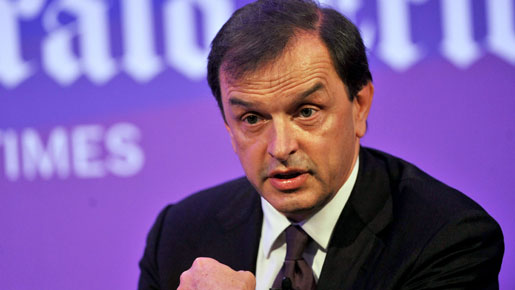
In the world of luxury goods, French jewellery house Van Cleef & Arples is a brand apart. Part of the Richemont group, the company produces pieces that evoke a sense of fantasy and timelessness. Founded by lovers Estelle Arples and Alfred Van Cleef in 1906, it takes a special kind of person to steer it into the future while maintaining its distinctive heritage. Stanislas de Quercize is just that person.
The phrase ‘high achiever’ only goes some of the way to describing de Quercize. A qualified lawyer and MBA, within one year of graduating from the prestigious Ecole Supérieur de Commerce in 1980, he became Product Manager at Procter & Gamble in France. In this role he worked to develop a uniform range of product packaging, overhauling the previous strategy of developing containers on a country-by-country basis. By identifying the link between seductiveness and cleanliness and its importance in all European cultures, he was able to establish how to produce universal packaging for each item. It was efficient work like this that saw him rise rapidly through the ranks at Procter and Gamble, becoming Director of Marketing for Benelux in 1986, followed by Director of Marketing for France in 1988.
As he describes it, working for Procter & Gamble required him to use his rational mind to grow brands, which led to success in his various roles. So what prompted such a complete career change, from everyday consumer products to the luxury goods sector?
In some ways, de Quercize was born for this role. Growing up in France on the same street as Mumm champagne, the finer things in life are in de Quercize’s blood. With an aristocratic heritage leading back to the 17th century French royal court, complete with family crest and motto ‘Quand Même’ (‘whatever it takes’), it is perhaps a surprise that he didn’t take this road earlier. But it was a personal tragedy that prompted him to move from a purely rational career to one with “more emotions”. He found that in the luxury market, there is a “will to build something [that will last] for a long time,” and it is this desire for endurance that touched something inside him.
In 1990, he joined Richemont group, initially working at Dunhill and Montblanc, where he held three positions: General Manager, CEO and President of Montblanc in North America, and finally International Marketing Director of Alfred Dunhill UK. It is from here that he moved into Richemont’s high fashion jewellery arm, becoming General Manager of Cartier in 1999. Diamonds are forever, as they say, and jewellery is something that has always been handed down from generation to generation. It is as if de Quercize’s desire to combine the rational with the emotional in a lasting form had been brought to its natural pinnacle by working in luxury jewellery. It’s also clear that he has a natural talent for this field, influenced no doubt by his personal love of modern art and photography. In the three years he was CEO of Cartier North America the company flourished; in the fourth quarter of 2004 revenues were up by 12 percent on the previous quarter.
In September 2005 he left Cartier, but stayed within Richemont, becoming President and CEO of Van Cleef & Arples. He has referred to Cartier as “the greatest success story in the jewellery business”, but said that he wants Van Cleef & Arples “to be the best, even if Cartier is bigger.” His commitment to Jaques Arples’ maxim “offer only the best” is absolute. Within one month of taking on the position, de Quercize made the company a member of the Council for Responsible Jewellery Practices. He also successfully coordinated the company’s one-hundredth anniversary celebrations in 2006 with a 250 piece world tour, commemorative book and new line. He is not a critical but hands-off ‘omnipotent overseer’ by anyone’s standards; he has spoken of his love of getting involved in the design process and how he his willing to follow the advice of other people in his team, even if it may initially go against his own intuition.
What has become clear since mid 2008, though, is that despite the high ‘emotional’ element of the jewellery industry, he has not lost his rational side. For now, the ‘noughties’ will be remembered as the decade that ended in the biggest economic crisis since the end of the Second World War. De Quercize’s strategy for seeing the company through these tough times may seem at first to be completely irrational – although the company’s business is yet to return to pre-crash levels, he is still set on opening new stores.
Nevertheless he draws on the lessons of history and good economic sense to explain his position, “Van Cleef & Arples has survived three previous international crises, in 1914, 1929 and 1939,” he stated in May 2009. The company, he says, has always responded to crises through creativity – in 1939 it opened its boutique in New York, which brought the brand to a new market. De Quercize hopes to mimic this story by opening new stores, saying that although he doesn’t “know when the rebound will be. The point is to be ready for it,” which is why there will be new stores opening across Asia, the US and Eastern Europe. The company also released its first range of perfumes and the new “Une Journée à Paris” collection in 2008 and 2009, respectively.
Stanislas de Quercize’s career has been a tale of two halves – the mundane and clinical on the one hand, the aspirational and fantastic on the other. What is clear, though, is that regardless of the situation or the product, de Quercize has the knowledge and talent to make it a success. This is the nature of a true business leader and what makes him an exceptional businessman.

